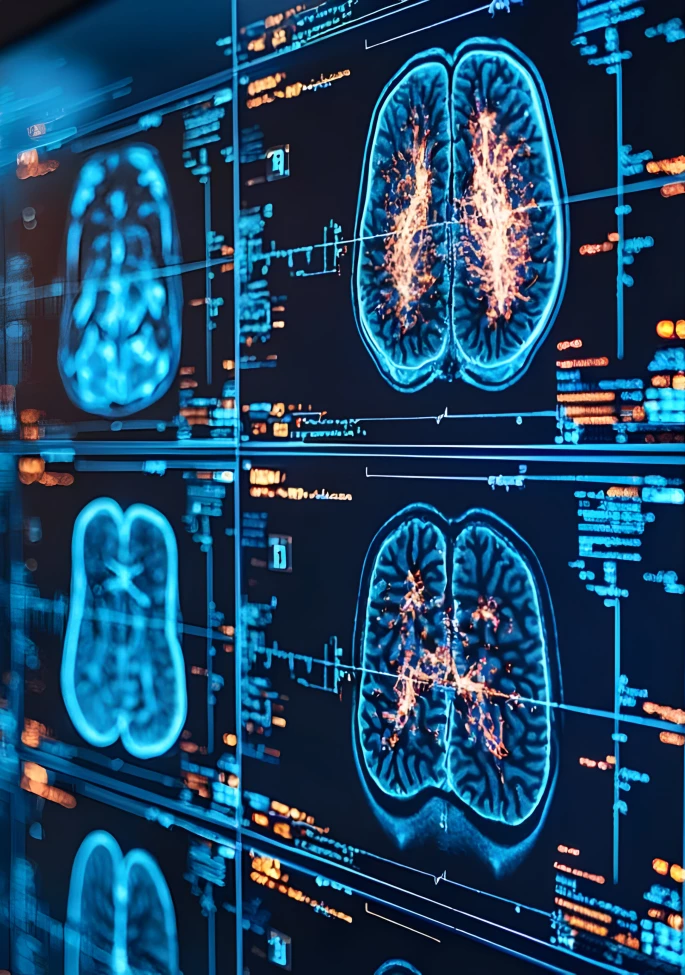Injury Awareness Week, from June 24-30, is a time to recognize the devastating impact of catastrophic injuries on victims and their loved ones. Catastrophic injuries such as traumatic brain injuries, spinal cord injuries, amputations, and severe burns can drastically impact a person's overall health and quality of life. In addition to the physical toll of such injuries, the emotional and financial impact can be long-term and overwhelming.
In 2022, the National Safety Council reported that "63 million people—about 1 in 5—sought medical attention for a nonfatal preventable injury." These numbers highlight the need to support catastrophic injury victims and their families through their recovery. Offering compassionate guidance and access to healthcare resources is crucial to helping these individuals heal and restore their quality of life.
Types of Catastrophic Injuries and Their Long-Term Physical Effects
Traumatic Brain Injuries (TBIs)
No two TBIs are alike, and their impact on an individual can vary widely depending on the severity and location of the injury. Common long-term symptoms include:
Headaches, Dizziness, and Balance Issues
Persistent or intermittent headaches are common following a TBI, as are reports of feeling dizzy or having difficulty maintaining balance.
Fatigue and Sleep Disturbances
Excessive tiredness and reduced energy levels are common, even after minor physical or mental activity. Patients may experience problems with sleep, including difficulty falling asleep, staying asleep, or sleeping more than usual.
Vision Problems and Sensitivity to Light and Sound
Blurred vision, seeing stars or double vision can occur, along with increased light and sound sensitivity, making it uncomfortable in normal environments.
Seizures and Motor Coordination Issues
In some cases, seizures can occur after a TBI, and victims may struggle with coordination and fine motor skills.
Initially, it is critical to prioritize the immediate safety of a TBI victim, ensuring their basic needs are met. Subsequently, developing a comprehensive long-term care plan to support their recovery can be helpful.
Spinal Cord Injuries (SCIs)
Spinal cord injuries may force individuals to relearn and adapt their interactions with their environment. Depending on the severity and location of the injury, victims may experience:
Paralysis
Quadriplegia/Tetraplegia: Paralysis of all four limbs and the torso, typically resulting from injuries to the cervical (neck) region of the spinal cord.
Paraplegia: Paralysis affecting part or all of the trunk, legs, and pelvic organs, usually due to injuries to the thoracic or lumbar regions of the spinal cord.
Respiratory Issues
Higher SCIs (especially those in the cervical area) can affect the breathing muscles. This may necessitate the use of ventilatory support and increase the risk of respiratory infections.
Bladder and Bowel Dysfunction
SCIs often disrupt the nerves that control bladder and bowel functions, leading to issues such as incontinence or the need for catheterization or other forms of management.
Spasticity
Spinal cord injuries can cause involuntary muscle contractions or spasticity, which can be painful and interfere with daily activities.
The physical toll of SCIs can be immense and often requires extensive, long-term rehabilitation and lifelong use of assistive devices.
Amputations
The loss of a limb due to catastrophic injury can significantly alter a person's physical capabilities.
Phantom Limb and Residual Pain
Many amputees experience painful sensations that seem to come from the amputated limb. Also, pain in the remaining part of the limb can occur due to nerve damage or other factors.
Muscle Contractions
Also known as contractures, these occur when the muscles around the amputation site become stiff and contracted, limiting mobility.
Skin Problems
Irritation, abrasions, and infections can occur, particularly where the limb contacts a prosthetic.
Decreased Mobility and Dexterity
Depending on the location of the amputation, individuals may experience challenges with mobility or manual tasks.
Managing these symptoms often requires a team approach, including medical professionals, physical therapists, and counselors, to help the individual adapt and regain functionality. Prosthetic devices can help post-amputation but require ongoing maintenance, replacement, and adaptation.
Severe Burns
Severe burns resulting from catastrophic injuries can lead to numerous immediate and long-term physical symptoms. These symptoms often require intensive care and prolonged medical treatment. Common physical symptoms of severe burns include:
Scarring
Burns can leave extensive scarring, including raised keloids and contractures, which can limit the affected area's mobility.
Infection
Burns can compromise the skin's protective barrier, making infection a significant risk.
Blistering and Swelling
Severe burns can cause large, painful blisters that may burst and increase the risk of infection. Significant swelling often occurs around the burned areas.
Intense Pain
Burned areas are extremely painful due to nerve damage and tissue destruction. Burned skin can also become hypersensitive to heat and cold.
Treatment for severe burns often includes pain management, infection control, fluid replacement, surgical intervention for skin graftsand long-term rehabilitation to improve thefunction and appearance of the burned areas.
The Unseen Scars of Catastrophic Injuries
Emotional Effects
Mental Health Challenges
Catastrophic injuries carry profound emotional effects that extend far beyond the initial physical trauma. As they come to terms with the life-altering changes, injury victims often grapple with a spectrum of mental health challenges, including:
- Depression: Many individuals may experience feelings of sadness, hopelessness, and helplessness, which can evolve into clinical depression. The loss of independence, changes in lifestyle, and chronic pain are contributing factors.
- Anxiety: Anxiety is common after a catastrophic injury, including generalized anxiety disorder and panic attacks. The uncertainty about the future, potential medical complications, and financial insecurity can all exacerbate feelings of anxiety.
- Anger and frustration: The limitations imposed by the injury can lead to feelings of anger and frustration. Victims might be angry about the circumstances that led to the injury or frustrated by their reduced capabilities.
- Post-Traumatic Stress Disorder (PTSD): Some individuals may relive the traumatic event through flashbacks and nightmares, leading to severe emotional distress and avoidance behaviors, which are characteristic of PTSD.
Dependency and Isolation
Feelings of helplessness can also manifest, with individuals experiencing intense emotions around their newfound dependency on others for daily tasks. Having to rely on others for personal care or daily tasks can lead to feelings of dependency, which might be frustrating and demoralizing for someone used to being independent. This loss of independence not only affects their personal identity but also strains social relationships, deepening feelings of loneliness and disconnection from their previous way of life. Physical limitations, communication barriers, changes in appearance or abilities, transportation and accessibility issues, and a lack of understanding from others, all contribute to isolation.
Comprehensive Emotional Support
These emotional scars, while less visible than the physical ones, are equally debilitating and require comprehensive psychological and social support to help victims rebuild their lives and regain a sense of self-worth and purpose, emphasizing the need for mental health services as an integral part of the recovery process.
Financial Repercussions
Immediate to Long-Term Care Expenses
The financial repercussions of catastrophic injuries are profound and multifaceted, often placing an immense burden on both the victims and their families. Immediately after injury, the costs begin to accumulate, starting with emergency medical care, which may include surgeries, hospital stays, and intensive treatments. Over time, these expenses can extend to long-term rehabilitation and continuous medical support, which can be necessary for years or even a lifetime.
Medical Equipment
Victims often require specialized medical equipment, ranging from wheelchairs to prosthetic devices, and may need frequent updates or replacements. Additionally, many victims must adapt their homes to accommodate their new physical limitations, involving costly renovations such as installing ramps, widening doorways, and modifying bathrooms. These necessary adjustments ensure accessibility but come with a high price tag.
Injured and Unemployed
Beyond the direct medical and adaptive costs, catastrophic injuries typically lead to significant changes in employment status. Many victims find themselves unable to return to their previous jobs due to physical or cognitive impairments, resulting in lost wages and, in some cases, complete loss of employment. This not only affects their current financial stability but also diminishes their lifetime earning potential, complicating future plans like retirement savings.
How Life Care Plans and Vocational Assessments Can Help Injury Victims
Comprehensive Life Care Plans
Addressing Medical and Psychological Needs
A life care plan is an essential tool to help individuals recovering from catastrophic injuries. It is designed to address the ongoing medical, therapeutic, and psychological needs, aiming to optimize the individual’s quality of life and independence. By systematically outlining the necessary medical treatments, rehabilitation methods, and psychological services needed, a life care plan ensures that all aspects of care are considered and coordinated effectively. This comprehensive approach helps to mitigate the emotional stress associated with managing such complex care needs, providing a roadmap for recovery that is tailored to the unique circumstances of each individual.
Addressing Financial Costs
Moreover, life care plans play a crucial role in addressing the financial implications of living with a catastrophic injury. By detailing the expected costs, from medical and therapeutic interventions to necessary home modifications and specialized equipment, these care plans help families and caregivers prepare for the financial commitment required.
Comprehensive Vocational Assessments
Workforce Reintegration and Regaining Independence
A vocational assessment conducted by Certified Rehabilitation Counselor (CRC) can play a pivotal role in the recovery journey of individuals who have suffered catastrophic injuries. These assessments are tailored to evaluate the vocational capabilities of the injured individual, considering their new physical, cognitive, and emotional limitations. The primary goal is to identify suitable employment opportunities and necessary accommodations that align with their current abilities. This process not only aids in reintegrating them into the workforce but also helps restore their sense of purpose and independence.
Earning Capacity
The vocational assessment also charts a viable financial future for injury victims by establishing their earning capacity pre-injury and post-injury. The CRC details the victim's prior job roles, skills, and earnings, and the assessment reflects how the injury altered their capacity to earn income in the future. This comprehensive approach not only highlights the direct economic consequences of the injury but also aids in planning and adapting career paths to optimize the individual's earning potential moving forward.
Our Experts Can Help
At IMS Legal Strategies, we recognize the distinct nature of each individual's long-term health requirements. Our team of Certified Life Care Planners and Certified Rehabilitation Counselors is wholeheartedly committed to crafting personalized and comprehensive care plans and vocational assessments that enhance the quality of life for victims of catastrophic injury. Our experts bring a wealth of dedication to each case, focusing on each person's unique physical, emotional, and financial needs.
Our expertise and professionalism have established us as a trustworthy partner in life care planning, vocational rehabilitation, and expert testimony. We offer insights grounded in thorough research, education, and collaborative efforts, all geared toward advocating for and enhancing the quality of life of those we serve.
For anyone in need of a life care plan, vocational assessment, or seeking answers to their questions, please connect with us at IMSLegal.com or call 866-751-6680.
In November 2024, IMS Legal Strategies welcomed the respected firm MacKenzie Life Care Planning, expanding our advisory services to support attorneys and healthcare providers seeking reliable life care plans and expert rebuttals for matters involving significant injuries.





